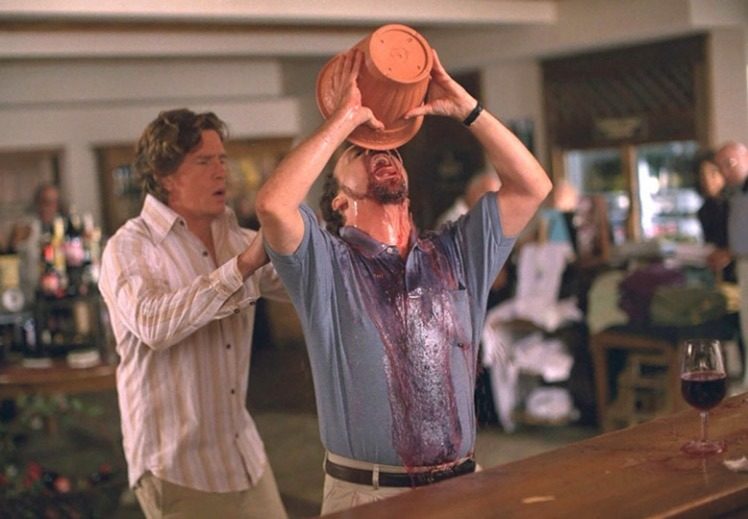
If you ask a winemaker what they think of the movie Sideways, you’ll likely hear a deep sigh. Released 18 years ago this month, the Oscar-winning film had an unexpected, lasting effect on red wine sales—catapulting demand for pinot noir, crushing public perception of merlot.
It’s all because the movie’s lead character, Miles, a struggling writer and obsessive wine snob with a passion for pinot noir, refuses to drink merlot. In a memorable scene, Miles (played by Paul Giamatti) proclaims his disdain for the wine, threatening to leave a restaurant if anybody at the table orders it.
The movie follows two middle-aged men on a road trip through California wine country. When Sideways premiered in 2004, merlot made up close to 20 percent of California’s red wine market. A few years later, it dropped to 13 percent. In the same period, pinot noir sales grew 16 percent. This so-called Sideways Effect has been thoroughly researched by universities and wine associations.
Now, though, merlot seems to be making a comeback. “As great as [Sideways] was, I certainly hope the perception of merlot has changed,” says Lake Mohawk-based wine educator Lourdes Arena, who curates wine events around New Jersey. “I like to think wine snobbery has decreased. These days, wine lovers feel more encouraged to explore wines based on other factors, like farming, small production, and winemaker ethos, versus price tag.”
When grown in the right places and treated properly, merlot can be fruity, velvety and age-worthy. There’s a reason the grape is a quintessential component in the red blends that make up Bordeaux’s red wines.
“To me, merlot is a beautiful wine to drink because it’s easy to share, and sharing wine with others is what’s great,” says Arena, who describes merlot as having blackberry notes and soft tannins that pair well with Korean barbecue, smoked meats and pizza. “It’s also underrated—and who doesn’t love an underdog story?”
For winemakers like Jeff Cole of Sullivan Rutherford Estate in Napa Valley, where cabernet sauvignon is king, merlot amounts to a secret weapon.
“Merlot is a very versatile variety,” he says. “From a winemaking perspective, merlot can adapt to the environment it is grown in, which makes it easy to produce wines that are stylistically aligned with any winemaker’s philosophy. My goal is to produce merlot that has a soul, to make a wine that is unique and sets itself apart.”
The winery recently doubled down on its commitment to the grape, ripping out four acres of cabernet sauvignon vines and replanting merlot.
And while merlot isn’t the leading red grape grown in New Jersey (the climate is better suited to cabernet franc and chambourcin), there are wineries throughout the Garden State making excellent examples. Look for bottles from Sharott Winery in Hammonton and Working Dog Winery in East Windsor. You’ll also find merlot in Coeur d’Est bottlings, a red wine blend made by wineries in the Outer Coastal Plain AVA (American Viticultural Area).
“There is untold potential for those of us who care to push the boundaries of fine merlot,” says Joshua Lowell, general manager at Sullivan Rutherford Estate in the Napa Valley. “Fortunately, we are finding enough wine lovers to support us in this endeavor.”
